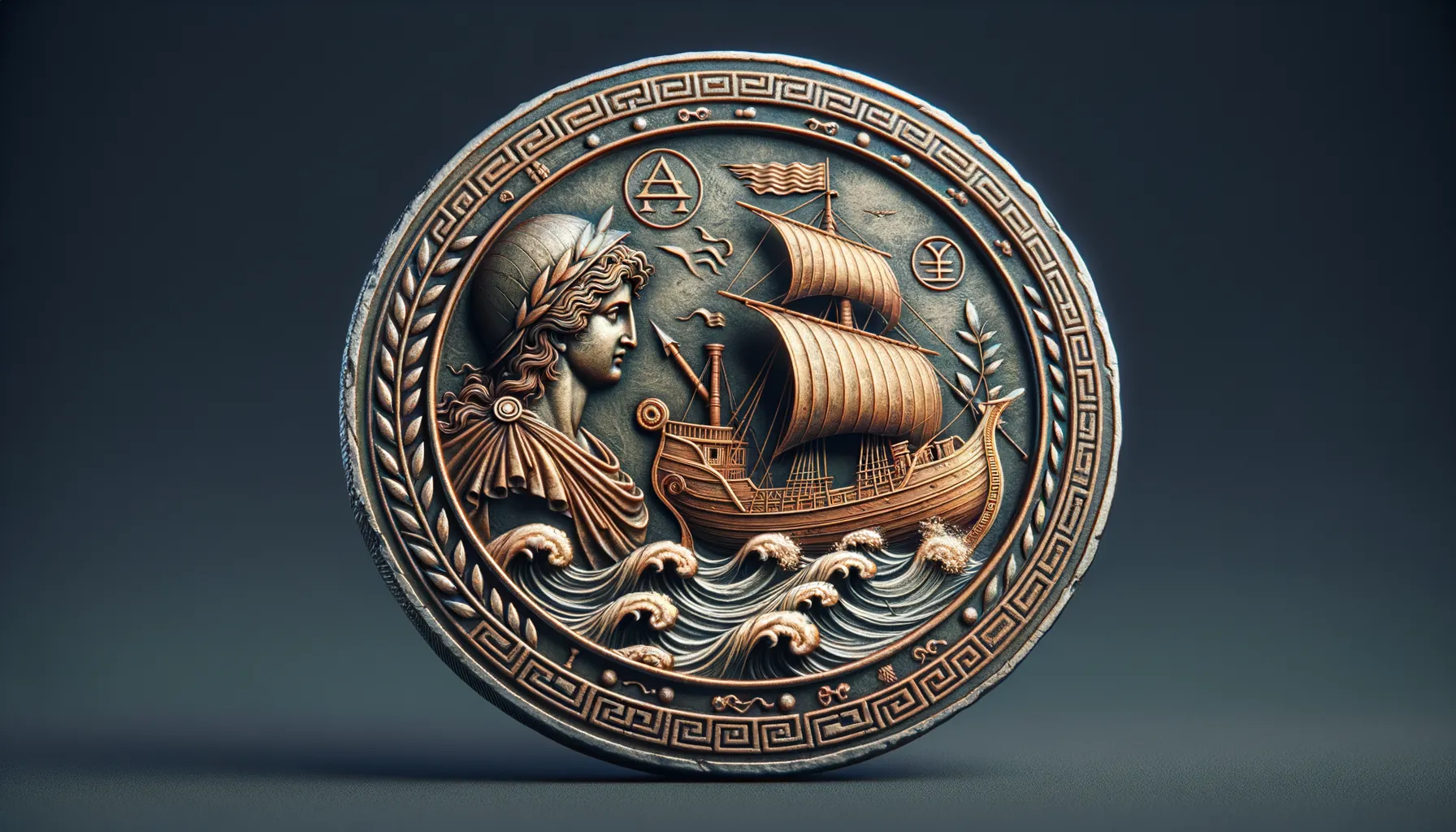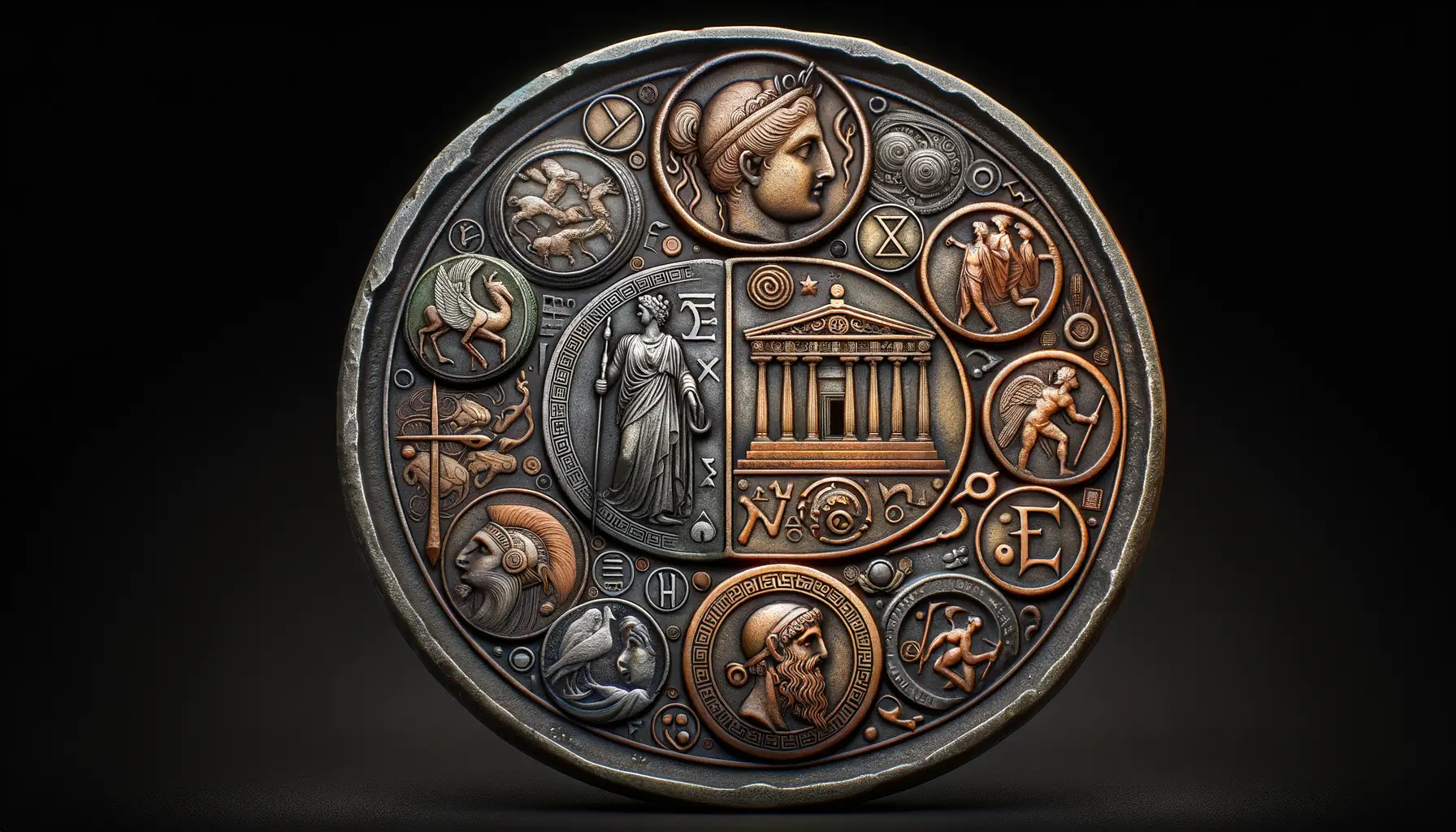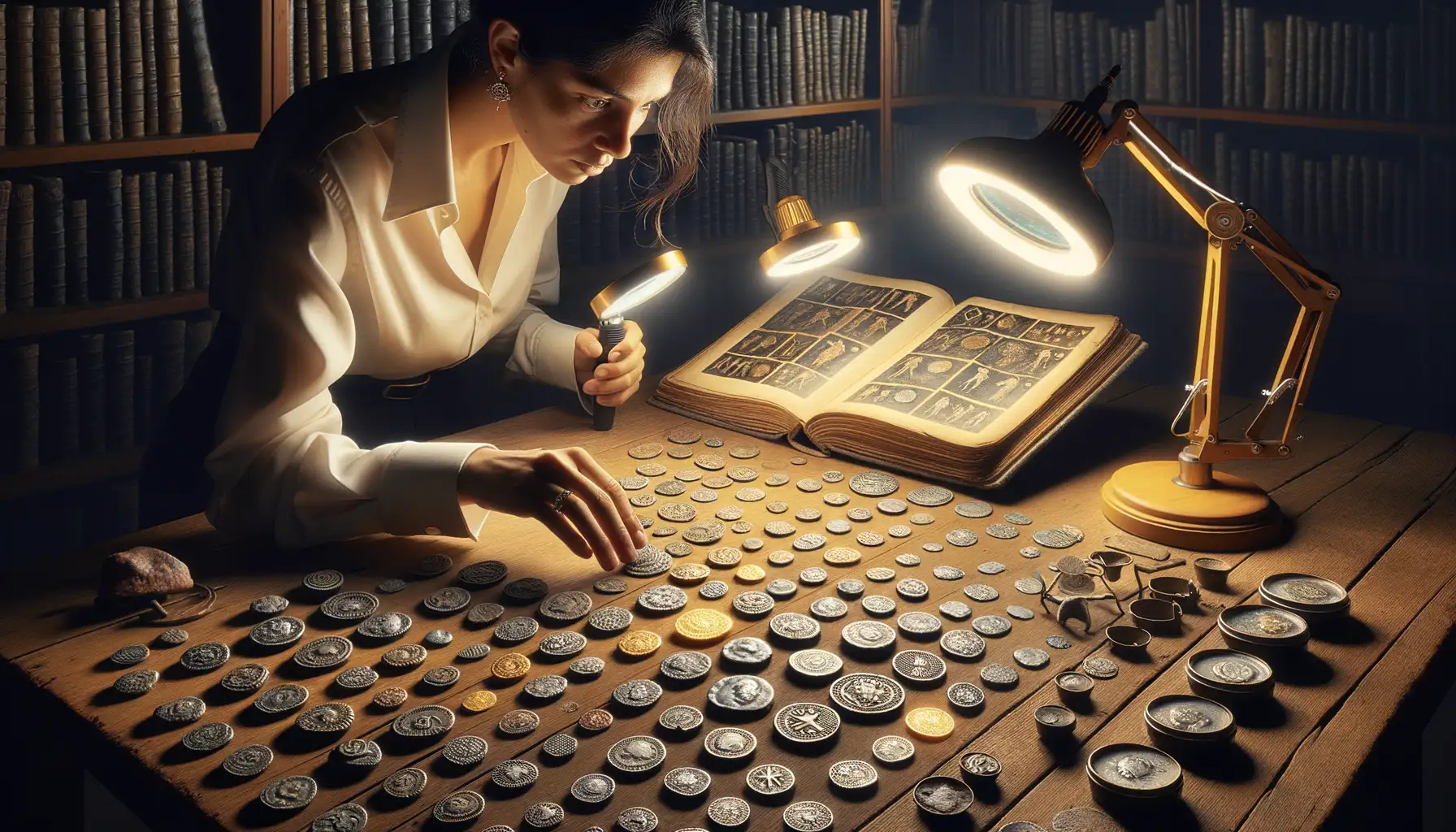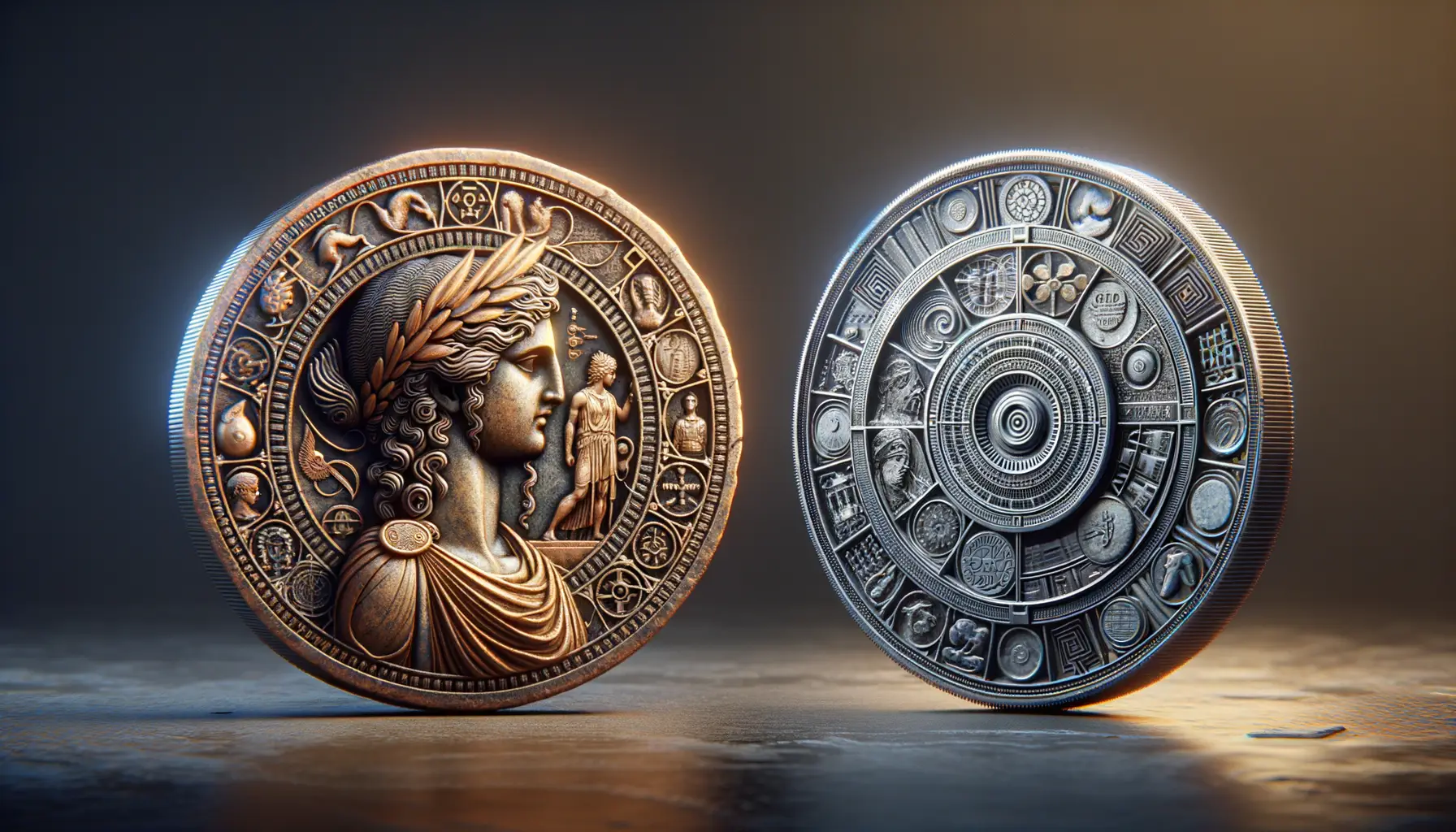The Historical Significance of Ancient Greek Coins
A Glimpse Into the Ancient Economy
Holding an ancient Greek coin is like shaking hands with history itself. These small, intricately designed pieces of metal weren’t just currency—they were the lifeblood of bustling marketplaces and the threads tying sprawling empires together. Imagine a coin from Athens, minted nearly 2,500 years ago, passing through the hands of a merchant selling olives, a soldier receiving payment, or an artisan crafting statues of the gods. Each one tells a tale of trade, power, and everyday life.
Ancient Greek coins were much more than tools for buying and selling; they were statements of identity and influence. City-states like Corinth, Ephesus, and Sparta imprinted their symbols and values onto their coinage as declarations of their culture. Coins became ambassadors, traveling across lands and seas, spreading not just wealth but stories of who these people were.
- They funded colossal wars—think of Alexander the Great’s campaigns.
- They showcased technological brilliance, with detailed designs etched into tiny surfaces.
- And they spread mythology far and wide, featuring gods like Athena and Apollo.
It’s astonishing to think these seemingly simple objects helped shape the complex web of ancient economies—and still captivate us today.
Design and Symbolism in Greek Coinage

Symbols That Speak: The Hidden Stories Behind Greek Coins
Ancient Greek coins are far more than metal disks—they’re windows into a world of myth, power, and artistry. Each design was crafted with purpose, packed with meaning that resonated deeply with the people who held them. Imagine flipping a coin today and seeing not just a president, but a god or hero staring back at you. That’s the kind of emotional connection these coins evoked.
Take the legendary owl of Athens, for example. This symbol of wisdom perched proudly on silver tetradrachms alongside the goddess Athena herself. It wasn’t just decoration—it was a promise of Athenian strength and intellect. Or consider the fierce profile of Alexander the Great, often depicted wearing the lion skin of Heracles. These images spoke volumes about leadership, divine favor, and destiny.
- Animals like lions, dolphins, and bulls symbolized everything from strength to prosperity.
- Gods, goddesses, and mythical creatures embodied protection, fertility, and power.
- Even abstract patterns carried cultural or religious significance.
Each coin was part money, part message—a mini masterpiece that turned every transaction into a cultural dialogue.
Famous Examples of Ancient Greek Coins

The Sparkling Legacy of the Athenian Owl
If coins could talk, the Athenian tetradrachm would sing ballads of power and democracy. Known for its striking depiction of an owl—Athena’s sacred bird—on one side and the goddess herself on the other, this coin is nothing short of iconic. Crafted from shimmering silver, it symbolized the cultural and military dominance of Athens during its Golden Age. The owl, staring with wide, intelligent eyes, whispers to us across time: “Knowledge is power.” And let’s not forget the olive branch delicately etched beside it—a nod to peace and prosperity. It’s no wonder collectors call this gem the “blue chip” of ancient coinage.
The Elegance of the Alexander the Great Staters
Step into the world of epic conquests with the gold staters of Alexander the Great. These coins were more than currency—they were a statement. On one side, imagine the radiant visage of Athena wearing her Corinthian helmet, fierce yet graceful. Flip it over, and there’s Nike, goddess of victory, poised mid-flight holding a laurel wreath. Their message was clear: wherever Alexander went, victory followed.
Some other fascinating examples to explore:
- The octodrachms of the Thracian kings—a celebration of divine and mortal synergy.
- The dolphin-themed coins of ancient Taras, a maritime marvel bearing witness to Greek creativity.
Collecting and Evaluating Ancient Greek Coins

Chasing Time Through the Coins
Imagine holding a slice of history in your palm — an ancient Greek coin, weathered yet brimming with stories. Collecting these remarkable artifacts isn’t just a hobby; it’s embarking on a treasure hunt through the centuries. Each coin carries whispers of bustling marketplaces, victorious battles, or gods revered by civilizations long gone.
But where do you begin this thrilling journey? Start by considering your focus. Are you drawn to coins from specific city-states like Athens and its iconic silver tetradrachms, stamped with the fierce face of Athena? Or perhaps it’s the rarity of a piece that excites you? Coins minted during fleeting reigns can feel like catching lightning in a bottle.
- Condition: Does the design still shine, or has time worn down its features?
- Authentication: A trusted dealer or professional grading service can ensure you’re not cradling a clever forgery.
- Historical Value: Who minted it? What does its imagery say about the society it served?
In this blend of art and archaeology, patience pays off. Greek coins are more than collectibles – they’re time capsules waiting to be unlocked by curious hands like yours.
How Ancient Greek Coins Influence Modern Numismatics

The Timeless Legacy of Ancient Greek Craftsmanship
It’s astonishing how the artistry of *ancient hands* continues to ripple through time. Take a moment to imagine holding an ancient Greek coin. You’re not just grasping metal—you’re clasping a piece of history, arguably one of the earliest forms of public storytelling. These coins weren’t just currency; they carried messages of power, faith, and identity. And here’s the magic: their influence hasn’t waned.
Modern numismatics is practically in awe of these ancient trailblazers. The fine details of, say, the tetradrachm, or the compelling imagery of Alexander the Great, inspire today’s coin designers to merge artistry with function. Have you noticed how modern commemorative coins still echo Greek designs? That seamless blend of symbolic motifs and cultural pride—thank the Greeks for that!
- Intricate patterns in today’s minting are often inspired by ancient die techniques.
- Some coin collectors even rank ancient Greek coins as benchmarks for craftsmanship.
What’s especially thrilling is how these influences resurface worldwide—ever admired the sharp relief and bold portraits on modern coins? That’s ancient Greek genius whispering across centuries.